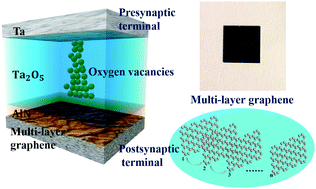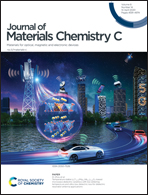Memristors based on multilayer graphene electrodes for implementing a low-power neuromorphic electronic synapse†
Abstract
Memristors with gradual conduction modulation can store and process information simultaneously similar to the way biological synapses function by adjusting the connections between two neighboring neurons. However, developing a memristor device with high stability, high uniformity and low power consumption is a challenge in neuromorphic computing applications. In this work, a two-terminal memristor with a Ta/Ta2O5/AlN/graphene structure was prepared using a multi-layer graphene film as the bottom electrode. The device exhibits stable electrical characteristics at a direct current scan voltage. More importantly, this memristor can fully simulate the function and plasticity of biological synapses, including spiking-time-dependent plasticity, and excitatory postsynaptic current among others. The energy value of a write event can be as low as 37 femtojoule through a pulse with 0.8 V amplitude and 50 ns width, further demonstrating the low power consumption. According to the fitting results of the current–voltage curve, the conduction mechanism was ascribed to trap assisted tunneling. The Ta/Ta2O5/AlN/graphene memristor provides an excellent candidate for achieving artificial synaptic neuromorphic computing with stability and low power consumption.



 Please wait while we load your content...
Please wait while we load your content...